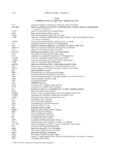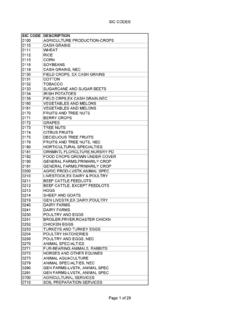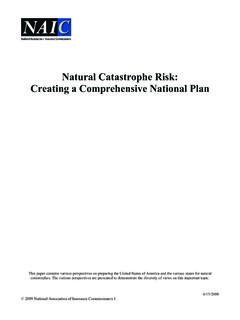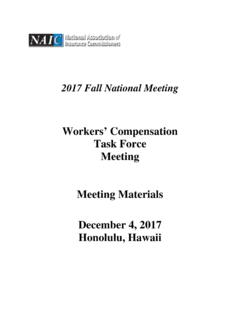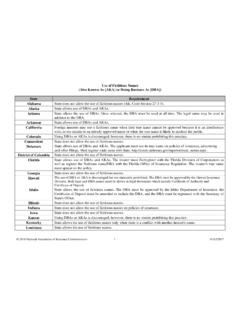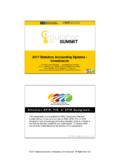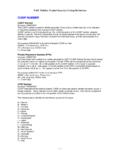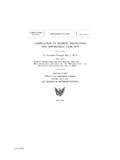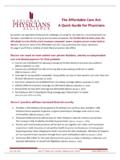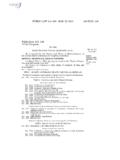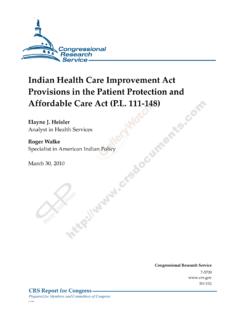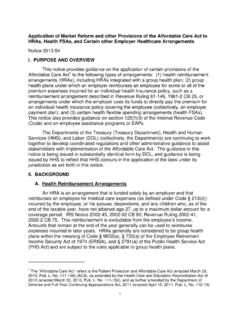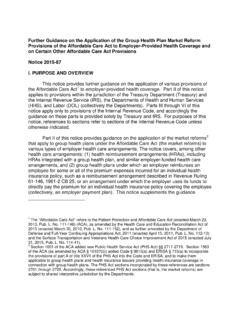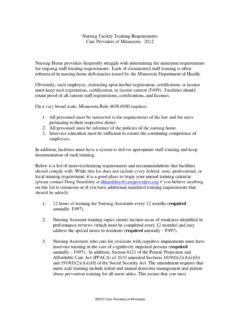Transcription of UTILIZATION REVIEW AND BENEFIT …
1 Model Regulation Service April 2012 2012 National Association of Insurance Commissioners 73-1 UTILIZATION REVIEW AND BENEFIT DETERMINATION MODEL ACT Table of Contents Section 1. Title Section 2. Purpose and Intent Section 3. Definitions Section 4. Applicability and Scope Section 5. Corporate Oversight of UTILIZATION REVIEW Program Section 6. Contracting Section 7. Scope and Content of UTILIZATION REVIEW Program Section 8. Operational Requirements Section 9. Procedures for Standard UTILIZATION REVIEW and BENEFIT Determinations Section 10. Procedures for Expedited UTILIZATION REVIEW and BENEFIT Determinations Section 11.
2 Emergency Services Section 12. Confidentiality Requirements Section 13. Disclosure Requirements Section 14. Regulations Section 15. Penalties Section 16. Separability Section 17. Effective Date Section 1. Title This Act shall be known and may be cited as the UTILIZATION REVIEW and BENEFIT Determination Act. Drafting Note: In some states existing statutes may provide the commissioner with sufficient authority to promulgate the provisions of this Act in regulation form. States should REVIEW existing authority and determine whether to adopt this model as an act or adapt it to promulgate as regulations. Section 2.
3 Purpose and Intent This Act establishes standards and criteria for the structure and operation of UTILIZATION REVIEW and BENEFIT determination processes designed to facilitate ongoing assessment and management of health care services. Section 3. Definitions For purposes of this Act: A. (1) Adverse determination means: (a) A determination by a health carrier or its designee UTILIZATION REVIEW organization that, based upon the information provided, a request for a BENEFIT under the health carrier s health BENEFIT plan upon application of any UTILIZATION REVIEW technique does not meet the health carrier's requirements for medical necessity, appropriateness, health care setting, level of care or effectiveness or is determined to be experimental or investigational and the requested BENEFIT is therefore denied, reduced or terminated or payment is not provided or made, in whole or in part.
4 For the BENEFIT ; UTILIZATION REVIEW and BENEFIT Determination Model Act 73-2 2012 National Association of Insurance Commissioners (b) The denial, reduction, termination or failure to provide or make payment, in whole or in part, for a BENEFIT based on a determination by a health carrier or its designee UTILIZATION REVIEW organization of a covered person s eligibility to participate in the health carrier's health BENEFIT plan; or (c) Any prospective REVIEW or retrospective REVIEW determination that denies, reduces or terminates or fails to provide or make payment, in whole or in part, for a BENEFIT .
5 (2) Adverse determination includes a rescission of coverage determination. Drafting Note: The federal Department of Labor s claims procedure final regulation (DOL final rule), as published in the Federal Register, Nov. 21, 2000, which establishes standards for the processing of claims under group health plans, uses the term adverse BENEFIT determination. This model act uses the term adverse determination. The NAlC has chosen to continue to use the term adverse determination in this model act instead of using the DOL final rule s term adverse BENEFIT determination because the term adverse determination is referenced in several other NAlC model acts in addition to this model act.
6 If the terminology were changed, this would necessitate revising several NAlC model acts to reflect this change in terminology. The definition of adverse determination in Subsection A has been revised, however, to be consistent with the DOL final rule s definition for the term adverse BENEFIT determination. The definition of adverse determination has been revised to include rescission of coverage determinations, as provided in the interim final rules on internal claims and appeals and external REVIEW processes, published in the Federal Register, July 23, 2010. B. Ambulatory REVIEW means UTILIZATION REVIEW of health care services performed or provided in an outpatient setting.
7 C. Authorized representative means: (1) A person to whom a covered person has given express written consent to represent the covered person for purposes of this Act; (2) A person authorized by law to provide substituted consent for a covered person; (3) A family member of the covered person or the covered person s treating health care professional when the covered person is unable to provide consent; (4) A health care professional when the covered person s health BENEFIT plan requires that a request for a BENEFIT under the plan be initiated by the health care professional; or (5) In the case of an urgent care request, a health care professional with knowledge of the covered person s medical condition.
8 D. Case management means a coordinated set of activities conducted for individual patient management of serious, complicated, protracted or other health conditions. E. Certification means a determination by a health carrier or its designee UTILIZATION REVIEW organization that a request for a BENEFIT under the health carrier s health BENEFIT plan has been reviewed and, based on the information provided, satisfies the health carrier s requirements for medical necessity, appropriateness, health care setting, level of care and effectiveness. Model Regulation Service April 2012 2012 National Association of Insurance Commissioners 73-3 F.
9 Clinical peer means a physician or other health care professional who holds a nonrestricted license in a state of the United States and in the same or similar specialty as typically manages the medical condition, procedure or treatment under REVIEW . Drafting Note: States may wish to define clinical peer more broadly to include a health care professional who has demonstrable expertise to REVIEW a case, whether or not the reviewing professional is in the same or similar specialty as the health care professional who made the initial decision. G. Clinical REVIEW criteria means the written screening procedures, decision abstracts, clinical protocols and practice guidelines used by the health carrier to determine the medical necessity and appropriateness of health care services.
10 H. Commissioner means the commissioner of insurance. Drafting Note: Use the title of the chief insurance regulatory official wherever the term commissioner appears. If the jurisdiction of certain health carriers, such as health maintenance organizations, lies with some state agency other than the insurance department, or if there is dual regulation, a state should add language referencing that agency to ensure the appropriate coordination of responsibilities. I. Concurrent REVIEW means UTILIZATION REVIEW conducted during a patient s stay or course of treatment in a facility, the office of a health care professional or other inpatient or outpatient health care setting.

